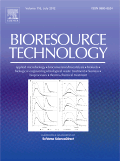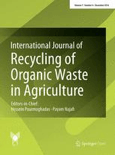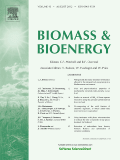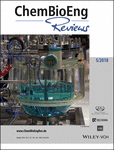
BIORESOURCE TECHNOLOGY
Scope & Guideline
Unleashing the Potential of Biological Resources for Global Impact
Introduction
Aims and Scopes
- Bioconversion Technologies:
Research on the conversion of biomass and waste materials into biofuels, bioproducts, and biochemicals using microbial, enzymatic, and thermochemical processes. - Waste Management and Valorization:
Studies focusing on the sustainable management of agricultural, industrial, and municipal waste through innovative bioprocessing techniques to recover nutrients and energy. - Environmental Biotechnology:
Investigation of microbial processes for environmental remediation, including wastewater treatment, pollutant degradation, and nutrient recovery. - Microbial Metabolic Engineering:
Development and optimization of microbial strains for enhanced production of value-added products, including lipids, proteins, and biopolymers. - Machine Learning and Data Analysis:
Application of computational techniques and machine learning models in optimizing biotechnological processes and predicting outcomes in bioconversion systems. - Biochar and Soil Amendments:
Research on the production and application of biochar from biomass and its role in improving soil health, carbon sequestration, and nutrient retention.
Trending and Emerging
- Integrated Bioprocessing Systems:
An increasing trend towards systems that combine multiple processes, such as anaerobic digestion and microbial electrolysis, reflects a holistic approach to resource recovery and waste management. - Microbial Electrochemical Technologies:
Research on microbial fuel cells and electrosynthesis is gaining momentum, focusing on the conversion of waste to energy while simultaneously treating wastewater. - Advanced Biorefinery Concepts:
Emerging studies emphasize the development of biorefineries that produce multiple high-value products from biomass, integrating various feedstocks and processes for sustainability. - Machine Learning Applications in Biotechnology:
The integration of machine learning techniques for optimizing bioprocesses and predicting outcomes is becoming increasingly prevalent, enhancing the efficiency of research and applications. - Biochar for Environmental Remediation:
Research on the use of biochar not only for soil amendment but also for the remediation of contaminated water and air is trending, reflecting a broader understanding of its multifunctional benefits. - Sustainable Wastewater Treatment and Resource Recovery:
Innovative approaches to wastewater treatment that focus on nutrient recovery and circular economy principles are increasingly prominent, showcasing the journal's relevance to environmental sustainability.
Declining or Waning
- Traditional Biogas Production:
Research specifically focused on conventional anaerobic digestion methods without integration of advanced technologies has diminished as new methods, such as microbial electrolysis and hybrid systems, gain traction. - Single-Product Biorefineries:
The focus on biorefineries producing a single product has decreased in favor of integrated systems that allow for multiple co-products, emphasizing circular economy principles. - Static Waste Treatment Methods:
Static or low-innovation waste treatment methods are being overshadowed by more dynamic, adaptive systems that utilize novel technologies and microbial enhancements. - Lignin Valorization through Conventional Means:
Lignin valorization through traditional chemical methods has waned as more efficient enzymatic and biological methods are developed and explored. - Basic Microalgae Cultivation Techniques:
Research focusing solely on basic cultivation methods for microalgae without addressing integrated systems or bioproduct recovery has seen a decline.
Similar Journals

International Journal Of Recycling of Organic Waste in Agriculture
Driving Change: From Waste to Valuable Resources in FarmingInternational Journal of Recycling of Organic Waste in Agriculture is a pioneering open-access journal, established in 2012 and published by the Islamic Azad University, Isfahan-Khorasgan Branch, Iran. With ISSN 2195-3228 and E-ISSN 2251-7715, this journal focuses on innovative research and development in the field of organic waste recycling within agricultural contexts. As indicated by its latest metrics, it holds a respectable ranking in the Q2 quartile in Agricultural and Biological Sciences and Q3 in Waste Management and Disposal for 2023. This positions the journal as a valuable resource for professionals, researchers, and students invested in sustainable agricultural practices and waste management strategies. With its commitment to advancing knowledge and fostering interdisciplinary dialogue, the journal serves as an essential platform for disseminating significant findings that can positively impact environmental sustainability and agricultural productivity worldwide.

ENVIRONMENTAL ENGINEERING SCIENCE
Empowering research that shapes environmental practices.ENVIRONMENTAL ENGINEERING SCIENCE is a leading journal published by MARY ANN LIEBERT, INC that provides a platform for pioneering research in the fields of environmental chemistry, pollution control, and waste management. With an ISSN of 1092-8758 and an E-ISSN of 1557-9018, this peer-reviewed journal aims to disseminate high-quality scientific studies that address critical environmental challenges. As evidenced by its 2023 category quartile rankings, it holds a notable position at Q3 in Environmental Chemistry and Pollution and Q2 in Waste Management and Disposal, highlighting its relevance and impact in these domains. Spanning over two decades from 1997 to 2024, the journal is dedicated to fostering innovations and promoting rigorous scholarship that can contribute significantly to sustainable environmental practices globally. Authors and researchers are encouraged to engage with this essential resource, which offers Open Access options to enhance the visibility and reach of their work. For those interested in advancing their understanding and practice within the environmental sciences, ENVIRONMENTAL ENGINEERING SCIENCE is an indispensable journal to consider.

CT&F-Ciencia Tecnologia y Futuro
Pioneering research for a sustainable future.CT&F-Ciencia Tecnologia y Futuro, a distinguished open-access journal published by ECOPETROL SA, serves as a vital platform for the dissemination of innovative research and advancements in the fields of chemical engineering, energy, fuel technology, and the broader disciplines within the geosciences. Established in 1996 and operating continuously until 2023, this bilingual journal aims to foster collaboration and knowledge exchange among researchers, professionals, and students in Colombia and beyond. With an increasing emphasis on sustainability and renewable energy, CT&F aligns with contemporary academic priorities and societal challenges. Although currently ranked in the Q4 category across multiple disciplines, the journal remains committed to enhancing its impact and accessibility, providing researchers with valuable insights and a significant forum to share their findings, all under the auspices of open-access since 2009. Explore a wealth of research as you contribute to the ongoing dialogue shaping the future of science and technology.

International Journal of Environmental Science and Technology
Bridging science and technology for a greener tomorrow.International Journal of Environmental Science and Technology, published by SPRINGER, stands as a premier platform for the dissemination of cutting-edge research in the fields of environmental science, technology, and engineering. With an impressive scope spanning from 2005 to 2024, this journal serves as a vital resource for academic and professional communities engaged in tackling pressing environmental challenges. It boasts a strong reputation, evidenced by its Q1 ranking in Agricultural and Biological Sciences and solid placements in Environmental Chemistry and Engineering. Researchers searching for high-impact studies will find the journal's contributions significant, as reflected in its rankings within Scopus: 34th percentile in Agricultural and Biological Sciences and notable standings in Environmental Engineering and Chemistry. Although the journal is not currently an Open Access resource, it maintains a commitment to academic rigor and innovation, making it indispensable for those devoted to advancing knowledge in environmental sustainability and technology.

Journal of Material Cycles and Waste Management
Advancing Sustainable Solutions for Material ManagementThe Journal of Material Cycles and Waste Management, published by Springer, stands as a pivotal resource in the fields of material cycles and waste management, addressing critical challenges related to the sustainability of materials and the efficient disposal of waste. With an impact factor reflective of its significant contribution to the scientific community, this journal publishes innovative research that spans a diverse range of topics, from recycling technologies to lifecycle assessment. The journal ranks in the Q2 category for both Mechanics of Materials and Waste Management and Disposal, highlighting its respected position in academia. Operating without open access, the journal seeks to engage researchers, professionals, and students alike, providing a platform to advance knowledge and foster collaboration in the pursuit of sustainable material management solutions. Located in Japan and adhering to a high standard of editorial excellence, the journal is a must-read for those invested in optimizing resource use and minimizing environmental impacts.

Waste Management
Shaping the future of waste disposal through rigorous research.Waste Management, published by Pergamon-Elsevier Science Ltd, stands as a premier journal in the field of waste management and disposal, reflecting its esteemed position with an impressive 2023 impact factor and ranking in the Q1 category. This journal is pivotal for researchers, professionals, and students, offering a rich repository of innovative studies and methodologies aimed at addressing the increasingly critical challenges in waste management. With a dedicated focus on advancing knowledge and practice in environmental science, it encompasses a wide array of topics from waste reduction techniques to sustainable disposal strategies. Founded in 1983, Waste Management continues to be at the forefront of academic discourse, providing invaluable insights into both theoretical frameworks and practical applications, thus playing a vital role in shaping the future of waste disposal practices worldwide.

Biofuels Bioproducts & Biorefining-Biofpr
Catalyzing Change in Biofuels and Bioproduct DevelopmentBiofuels Bioproducts & Biorefining (Biofpr), published by WILEY, stands at the forefront of research dedicated to the sustainable production and utilization of biofuels and bioproducts. With its robust impact, as evidenced by its placement in the Q2 quartile across both Bioengineering and Renewable Energy, Sustainability and the Environment categories, this journal provides a vital platform for disseminating high-quality research aimed at advancing bio-refining technologies and bio-product innovations. Covering a wide range of topics from production methodologies to environmental impacts, Biofpr serves as an essential resource for researchers, professionals, and students eager to contribute to the evolving领域 of renewable energy solutions. Its consistent performance in the Scopus rankings further underscores its importance, ranking #78 in Renewable Energy and #51 in Chemical Engineering, making it an indispensable read for those committed to sustainability and scientific advancement in the biofuels sector.

BIOMASS & BIOENERGY
Navigating the Path to Renewable Energy ExcellenceBIOMASS & BIOENERGY, published by Pergamon-Elsevier Science Ltd, is a premier academic journal focusing on the interdisciplinary fields of biomass and bioenergy research. With its impressive impact reflected in its 2023 Q1 rankings across multiple categories, including Agronomy and Crop Science, Forestry, Waste Management and Disposal, and a solid Q2 in Renewable Energy, Sustainability and the Environment, this journal stands at the forefront of advancing knowledge in renewable resources and sustainable practices. Established in 1991, it serves as a vital platform for researchers, professionals, and students to disseminate groundbreaking studies and innovative findings that shape the future of renewable energy. Though it does not currently offer open access, the journal's high ranking on Scopus, particularly its 95th percentile rank in key agricultural and environmental science categories, underscores its significance in promoting critical discourse and scientific advancements in biomass utilization and energy generation.

Biomass Conversion and Biorefinery
Catalyzing research for a greener, sustainable future.Biomass Conversion and Biorefinery, published by Springer Heidelberg, is a prominent peer-reviewed journal dedicated to advancing the field of renewable energy and sustainable practices. With ISSN 2190-6815 and E-ISSN 2190-6823, this journal serves as a vital platform for researchers, professionals, and students focusing on the valorization of biomass and the development of biorefinery technologies. Notably, it holds a respectable impact factor and is categorized in the Q2 quartile of Renewable Energy, Sustainability and the Environment, indicating its strong influence within the academic community. Covering a wide range of topics from biomass feedstock characterization to innovative bioconversion processes, the journal aims to facilitate interdisciplinary collaboration and knowledge exchange. As it spans in scope from 2011 to 2024, audience members can benefit from timely research insights that contribute to sustainable energy solutions in a world increasingly focused on environmental stewardship.

ChemBioEng Reviews
Advancing the Frontiers of Biochemical InnovationChemBioEng Reviews is a premier academic journal dedicated to advancing the fields of biochemistry, bioengineering, and chemical engineering. Published by WILEY-V C H VERLAG GMBH, this journal serves as an essential platform for researchers and professionals seeking to disseminate groundbreaking insights and innovations. With a remarkable impact factor and a solid reputation, it is ranked in the top quartile (Q1) across multiple disciplines, including Biochemistry, Bioengineering, and Industrial and Manufacturing Engineering. The journal's comprehensive scope covers the synthesis, analysis, and application of bioengineered solutions, making it a vital resource for anyone involved in process chemistry and technology. With an unwavering commitment to high-quality scientific discourse from 2014 to 2024, ChemBioEng Reviews is not only pivotal for the academic community but also contributes to industry advancements in filtration, separation processes, and the intersection of chemical and biological engineering.